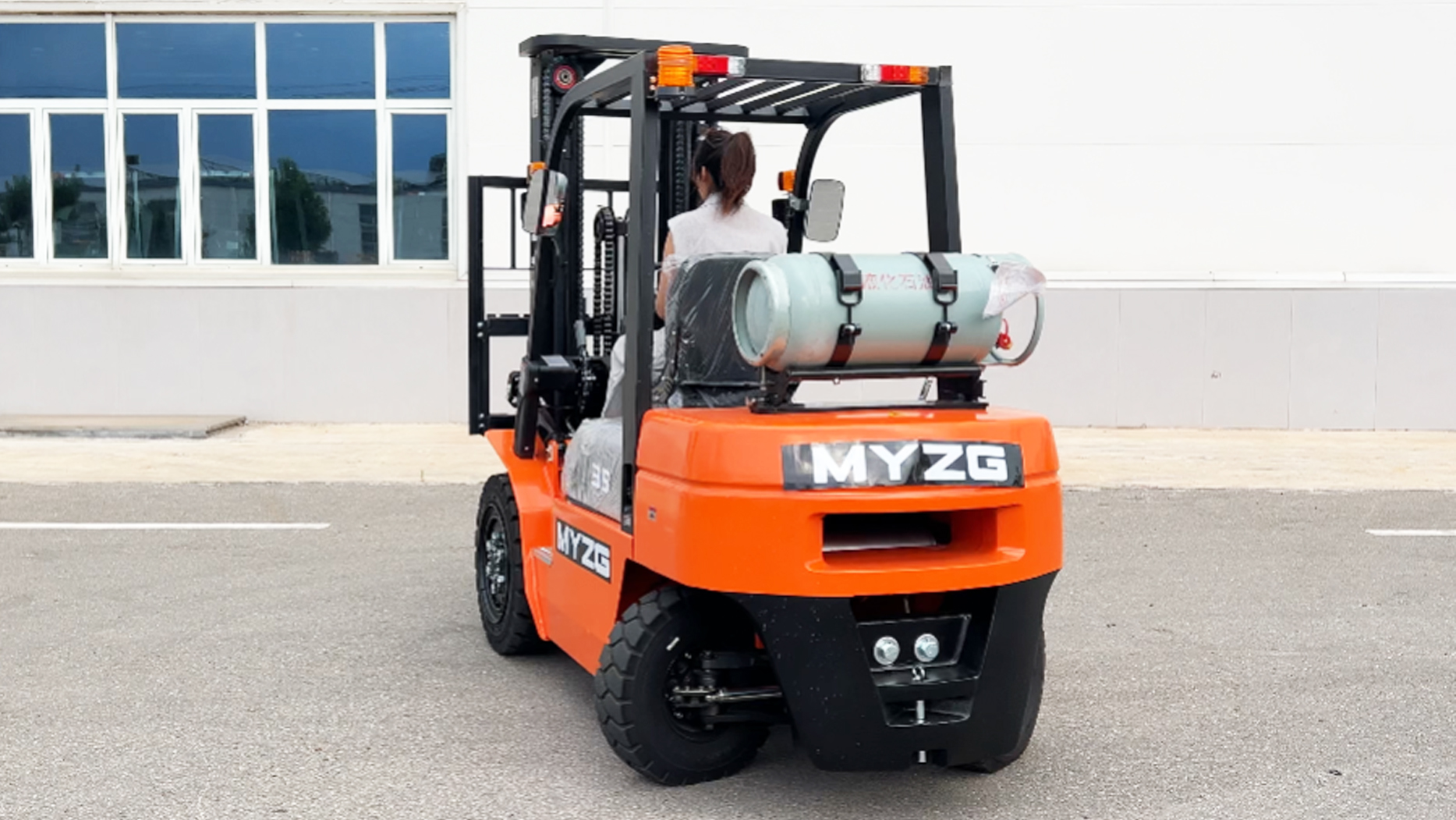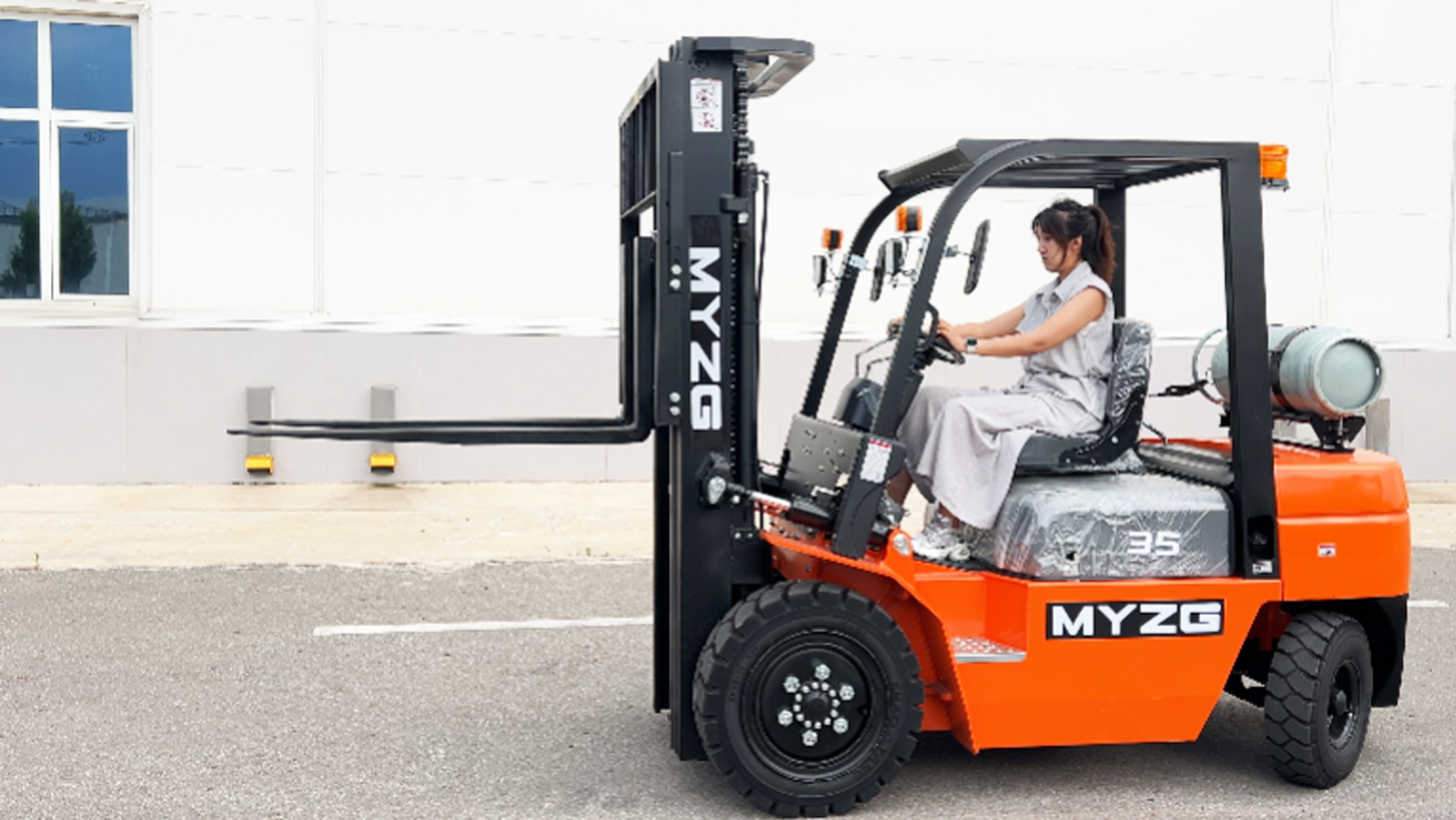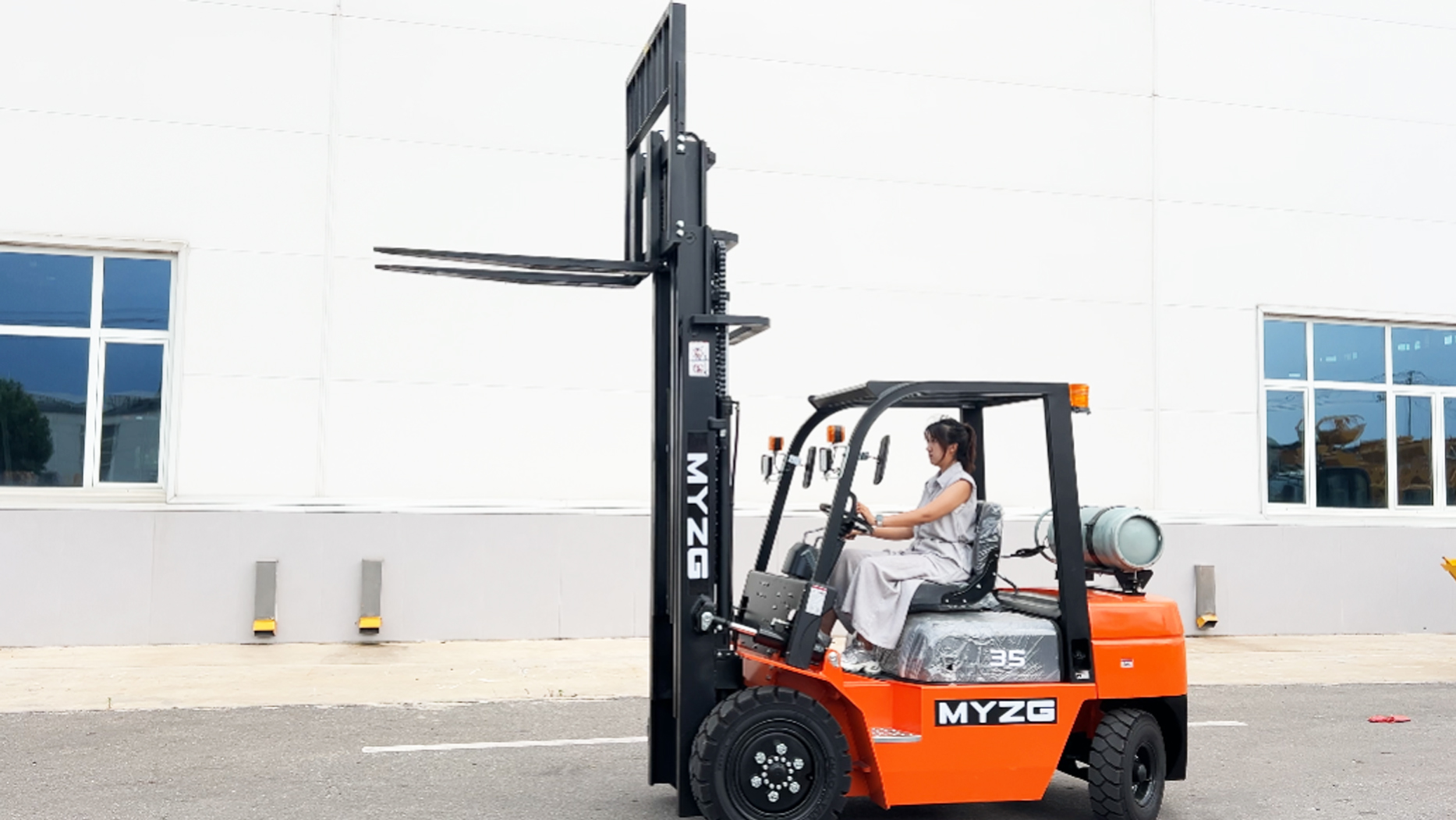Operating and refueling any forklift requires adherence to strict safety protocols, but LPG dual-fuel forklifts introduce a unique set of considerations. Because these machines use liquefied petroleum gas (LPG) in pressurized cylinders, specific safety precautions are paramount to prevent accidents, injuries, and property damage. While the versatility of being able to switch between LPG and gasoline is a key advantage, it comes with the responsibility of managing a highly flammable and pressurized fuel source safely.
For any business using these forklifts, from a compact model to a powerful 3-ton capacity unit, understanding and implementing these safety measures is non-negotiable. This is not just about compliance; it's about creating a safe working environment for every employee and protecting your assets.
Key Safety Precautions for Operation
Operating an LPG dual-fuel forklift safely requires attention to both the machine's mechanical state and the environment in which it's being used.
1. Pre-Shift Inspection:

Daily Checks: The operator must perform a thorough pre-shift inspection, including checking fluid levels, tire condition, brakes, and lights.
LPG System Check: Specifically for the LPG system, the operator must inspect the tank, hoses, and connections for any signs of leaks, damage, or wear. A quick "sniff test" for the distinct sulfur-like odor of propane is a simple but effective measure. All connections should be tight and secure.
Fuel Selector: Ensure the fuel selector switch is set to the correct fuel for the operating environment (LPG for indoors, gasoline for outdoors).
2. Ventilation and Environmental Awareness:
Indoor Operation: LPG-powered forklifts produce carbon monoxide (CO) and other emissions. While cleaner than gasoline, they must only be operated in well-ventilated indoor spaces. Lack of ventilation can lead to a buildup of CO, which is odorless and can cause serious health issues or death. CO detectors should be present in all indoor work areas.
Outdoor Operation: When operating outdoors, gasoline can be used, but all safety protocols for a gas-powered machine still apply, including proper refueling procedures and awareness of sparks or open flames.
Warning Systems: Operators must be trained to recognize and react to the forklift's warning lights or gauges related to the fuel systems, such as a "low LPG" indicator or a check engine light.
3. Safe Driving Practices:
Smooth Operation: Operate the forklift smoothly. Avoid sudden stops, starts, or turns, as this can dislodge a poorly mounted LPG tank.
Load Security: Ensure the load is secure and within the forklift's capacity. Overloading can compromise stability, particularly on uneven ground.
Height Restrictions: Be aware of overhead clearances and never operate the forklift with the mast raised in areas with low ceilings.
Parking: Always park the forklift in a designated, safe area with the parking brake engaged, forks lowered, and power off.

Essential Safety Precautions for Refueling (LPG)
Refueling an LPG forklift is the most critical safety procedure and must be done with extreme care and precision.
1. Designated Refueling Area:
Ventilated Space: LPG refueling must always take place in a designated, well-ventilated outdoor area away from ignition sources, drains, and building entrances. This prevents the buildup of flammable propane gas.
No Smoking/Open Flames: The refueling area must be clearly marked with "No Smoking" and "No Open Flames" signs.
2. Personal Protective Equipment (PPE):
Gloves: Operators should wear gloves to protect their hands from the cold of the pressurized liquid gas. The tank and valve will become very cold during the disconnection and connection process.
Eye Protection: Safety glasses or goggles should be worn to protect against any potential spray of liquid LPG.
3. The Tank Change Procedure:
Shut Down the Forklift: The forklift engine must be completely turned off before attempting to change the tank.
Engage the Parking Brake: Secure the machine so it cannot move.
Close the Valve: The operator must first close the valve on the empty LPG tank. This prevents any remaining gas from escaping.
Disconnect the Connector: Use a wrench to loosen and disconnect the fuel line connector from the empty tank. Ensure the connector is handled carefully and is not damaged.
Remove the Empty Tank: Carefully unlatch and remove the empty tank. LPG tanks can be heavy and awkward.
Inspect the New Tank: Before installing a new tank, inspect it for any signs of damage, dents, rust, or a faulty valve. Do not use a damaged tank.
Position the New Tank: Securely latch the new, full tank in its designated position on the forklift. The tank should be aligned properly so the liquid outlet points down, which is essential for the system to draw liquid LPG effectively. The locating pin on the tank should fit into the corresponding hole on the forklift to ensure correct orientation.
Connect the Fuel Line: Connect the fuel line to the new tank, ensuring the fitting is properly aligned. Hand-tighten first, then use a wrench to secure it tightly but without overtightening, which can damage the seal.
Open the Valve Slowly: Slowly open the valve on the new tank. Listen for any hiss or smell that would indicate a leak. If a leak is detected, immediately close the valve and re-tighten the connection. If the leak persists, remove the tank and tag it for repair.
Start the Forklift: Once the tank is secured and the connection is leak-free, the forklift can be started.
 Additional Safety and Maintenance Considerations
Additional Safety and Maintenance Considerations
Proper Tank Storage: Spare LPG tanks must be stored in a dedicated, secure, well-ventilated, upright rack away from heat sources, ignition points, and pedestrian traffic.
Emergency Procedures: All employees should be trained on the location and use of fire extinguishers suitable for gas fires (Class B) and on the proper protocol for reporting a leak.
Maintenance and Inspection: In addition to daily checks, the LPG system requires periodic professional inspection. Hoses, seals, and the regulator should be replaced according to the manufacturer's recommendations to prevent failures.
Brands and Quality: The quality of the forklift itself is a safety factor. Reputable manufacturers, including those like MYZG and MINGYU (a common name for various Chinese heavy equipment brands), build their dual-fuel forklifts with safety in mind. Their models often feature robust mounting systems for the LPG tank and durable, high-quality fuel lines and valves, reducing the risk of leaks and failures. A well-designed, reliable machine is the foundation of safe operation.
Conclusion
The versatility of an LPG dual-fuel forklift makes it an invaluable asset, but its safe operation hinges on a disciplined approach to maintenance and refueling. Adhering to these specific safety precautions, from the daily inspection of the LPG system to the precise procedure for changing a tank, is non-negotiable. Proper operator training, a designated refueling area, and a commitment to using well-maintained equipment from reputable brands like MYZG or MINGYU are the cornerstones of safe operation. By prioritizing these safety protocols, businesses can fully leverage the power and flexibility of their dual-fuel forklifts while protecting their most valuable assets: their employees and their facilities.
Post time:Aug.07.2025
